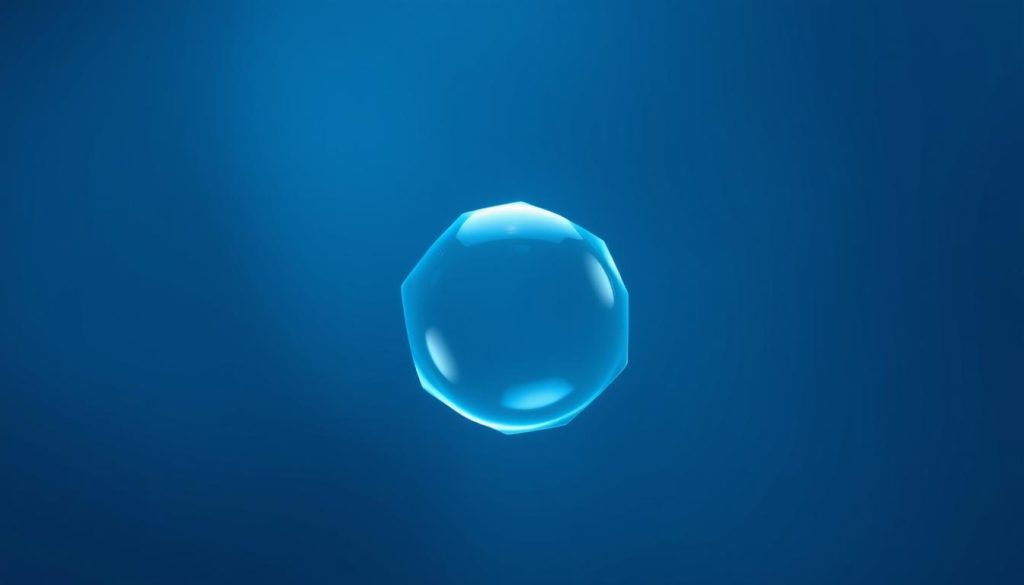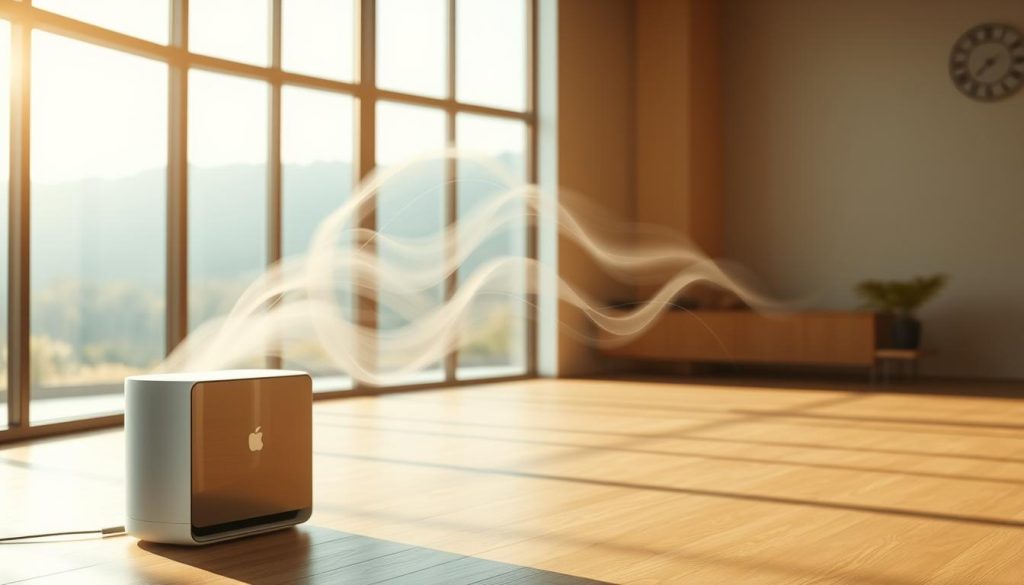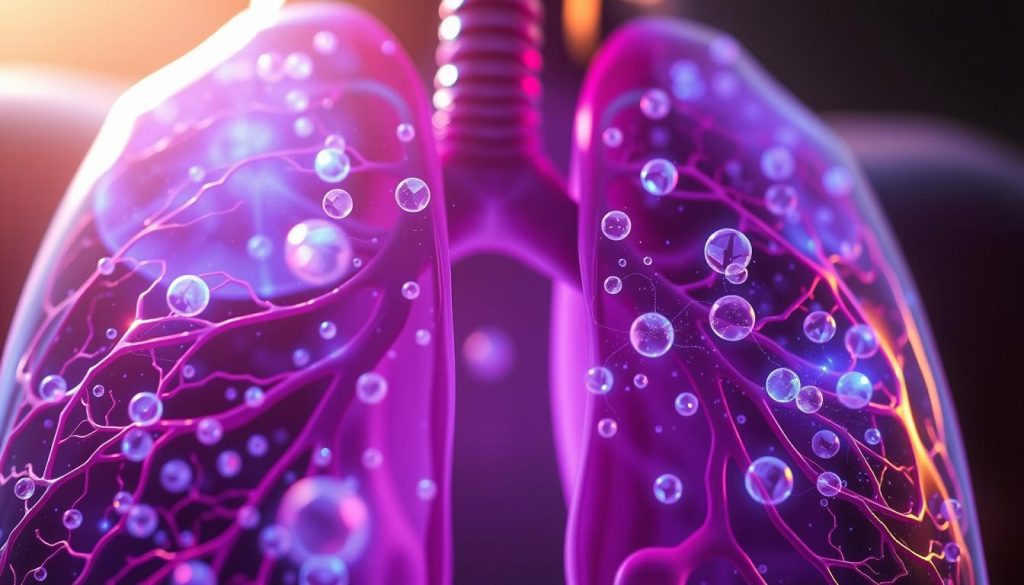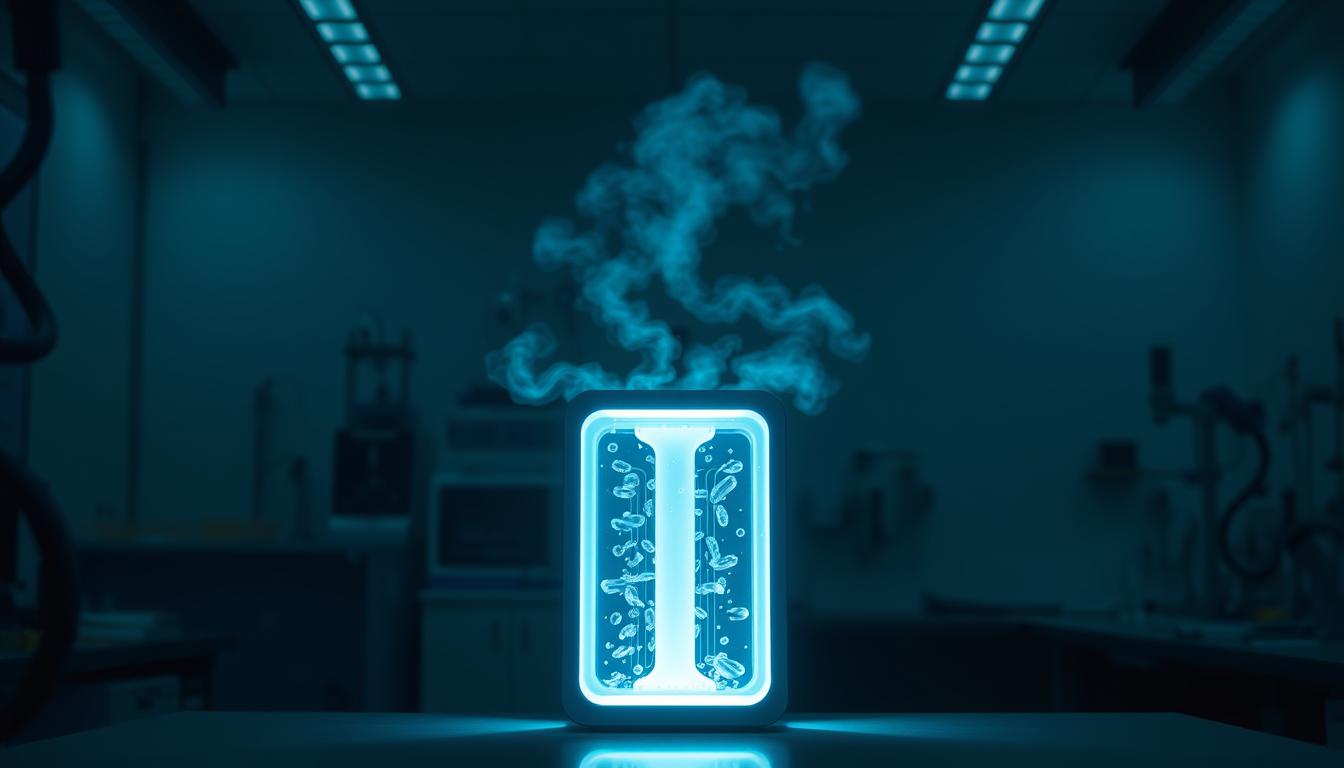When it comes to improving indoor air quality and reaping potential health benefits, two terms often come up: negative ions and ozone. While both play a role in air purification, they are distinct entities with unique properties. In this article, we’ll explore the key differences between negative ions and ozone, shedding light on their origins, functions, and effects on human well-being.
As we delve into the world of air ionizers and ozone generators, it’s crucial to understand the science behind these technologies. By grasping the fundamental differences between negative ions and ozone, you’ll be better equipped to make informed decisions about the air purification methods that best suit your needs and prioritize your health.
What are Negative Ions?
Negative ions are tiny, electrically charged particles that are naturally present in the air we breathe. These ions are created when an atom or molecule gains an extra electron, giving it a negative charge. Despite their small size, negative ions can have a significant impact on our overall well-being and the quality of the air around us.

Negative ions are abundant in natural environments, particularly near waterfalls, beaches, and forests. The refreshing and invigorating feeling you experience when spending time in these settings can be attributed, in part, to the high concentration of negative ions in the air. These ions interact with air molecules, helping to purify the air and promote a sense of well-being.
The Science Behind Negative Ions
The process by which negative ions are created involves the transfer of electrons. When an atom or molecule gains an extra electron, it becomes negatively charged. This can occur through various natural processes, such as the movement of water molecules in waterfalls or the breaking of waves on the shore. Negative ions can also be generated by certain electronic devices designed to purify the air.
Once negative ions are present in the air, they attract positively charged particles, such as dust, pollen, and other pollutants. By attaching to these particles, negative ions help to remove them from the air, effectively purifying it. This process can lead to improved air quality and a cleaner, more refreshing environment.
Benefits of Negative Ions
Exposure to negative ions has been associated with several potential benefits for human health and well-being. Some of these benefits include:
- Mood enhancement: Negative ions may help to elevate mood and alleviate symptoms of depression and seasonal affective disorder (SAD).
- Stress reduction: Spending time in environments rich in negative ions, such as near waterfalls or beaches, can promote relaxation and reduce stress levels.
- Improved sleep: Negative ions may contribute to better sleep quality by promoting a more restful and rejuvenating sleep environment.
- Increased energy levels: Exposure to negative ions has been linked to increased energy levels and reduced feelings of fatigue.
| Environment | Negative Ion Concentration (ions/cm³) |
|---|---|
| Waterfalls and Beaches | 10,000 – 100,000 |
| Mountains and Forests | 1,000 – 10,000 |
| Urban Areas | 100 – 1,000 |
| Indoor Spaces (offices, homes) | 50 – 100 |
As seen in the table above, natural environments tend to have significantly higher concentrations of negative ions compared to urban and indoor spaces. This highlights the importance of spending time in nature and incorporating negative ion-generating devices into our living and working spaces to promote better health and well-being.
What is Ozone?
Ozone is a unique form of oxygen that consists of three oxygen molecules bonded together, forming the chemical formula O3. Unlike the oxygen we breathe, which contains two oxygen atoms (O2), ozone is a highly reactive gas with distinct properties.

Ozone can be found in two different layers of the Earth’s atmosphere. The stratospheric ozone layer, located about 6 to 30 miles above the Earth’s surface, acts as a protective shield by absorbing harmful ultraviolet light from the sun. On the other hand, ground-level ozone, which is the main component of smog, is considered a pollutant and can have adverse effects on human health and the environment.
How Ozone is Created
Ozone can be created through various natural and artificial processes. In the stratosphere, ozone is formed when ultraviolet light from the sun breaks apart oxygen molecules (O2), allowing the single oxygen atoms to combine with other oxygen molecules to form ozone (O3).
At ground level, ozone is primarily created by chemical reactions between nitrogen oxides (NOx) and volatile organic compounds (VOCs) in the presence of sunlight. These pollutants are emitted by sources such as motor vehicles, power plants, and industrial facilities. Electrical discharges, such as those occurring during thunderstorms, can also lead to the formation of ozone.
Uses of Ozone
Despite its potential negative impacts on health and the environment, ozone has several beneficial applications:
- Water purification: Ozone is a powerful oxidant that can effectively disinfect water by inactivating bacteria, viruses, and other microorganisms. It is commonly used in water treatment plants and swimming pools.
- Air purification: Ozone generators are sometimes used to remove odors, pollutants, and allergens from indoor air. However, it is crucial to use these devices with caution, as excessive ozone levels can be harmful to human health.
- Industrial applications: Ozone is employed in various industrial processes, such as wastewater treatment, food preservation, and the production of certain chemicals and pharmaceuticals.
While ozone has its benefits, it is essential to strike a balance and minimize the creation of ground-level ozone to protect human health and the environment.
Negative Ions vs Ozone: What’s the Difference?
While both negative ions and ozone play a role in improving air quality, they have distinct differences in their chemical composition and how they interact with the environment. Understanding these key contrasts is essential for making informed decisions about air purification in indoor environments.
At a fundamental level, negative ions are oxygen atoms with an extra electron, giving them a negative charge. They are naturally occurring in outdoor environments like waterfalls, beaches, and forests. In contrast, ozone is a molecule composed of three oxygen atoms (O3). It is less stable than the oxygen we breathe (O2) and can be created by electrical discharges or ultraviolet light interacting with oxygen.
The table below summarizes some of the key differences between negative ions and ozone:
| Negative Ions | Ozone | |
|---|---|---|
| Chemical Composition | Oxygen atom with extra electron (O–) | Three oxygen atoms (O3) |
| Stability | Stable, naturally occurring | Unstable, breaks down quickly |
| Health Effects | Generally beneficial, linked to improved mood and respiratory health | Can be harmful at high concentrations, irritates lungs |
When it comes to their impact on air quality, both negative ions and ozone can help remove pollutants from indoor environments. However, they do so through different mechanisms. Negative ions attach to airborne particles like dust, allergens, and bacteria, causing them to become heavy and fall out of the air. Ozone, on the other hand, oxidizes and breaks down certain chemicals and odors.
While ozone can be an effective air purifier, it’s important to note that high concentrations of ozone can have negative health effects, irritating the lungs and exacerbating respiratory conditions. This is why ozone generators should be used with caution and only in unoccupied spaces. In contrast, negative ion generators are generally considered safer for continuous use in occupied indoor environments.
Air Purification: Negative Ions and Ozone
Both negative ions and ozone can play a role in purifying the air we breathe, but they work in different ways. Negative ions are naturally occurring particles that can help remove airborne pollutants, while ozone is a reactive gas that can break down certain contaminants through chemical reactions. Let’s explore how each of these elements contributes to air purification.
How Negative Ions Purify the Air
Negative ions are effective at removing various airborne pollutants, including:
- Allergens like pollen, pet dander, and dust mites
- Bacteria and viruses that can cause illness
- Smoke particles from cigarettes or wildfires
- Other fine particles like dust and dirt
When negative ions encounter these pollutants, they attach to them, causing the particles to become heavier and fall out of the air. This process helps to purify the air, making it cleaner and healthier to breathe.

Ozone’s Role in Air Purification
Ozone, on the other hand, purifies the air through chemical reactions. When ozone comes into contact with certain airborne pollutants, it can break them down into less harmful compounds. This process is particularly effective against:
- Volatile organic compounds (VOCs) from paints, cleaning products, and furniture
- Odors from cooking, pets, or other sources
- Some bacteria and viruses, though not as effectively as negative ions
However, the use of ozone for indoor air purification is controversial. While ozone can be effective at breaking down some pollutants, it can also be harmful to human health when inhaled in high concentrations. As a result, many health organizations caution against the use of ozone generators in occupied spaces.
In summary, both negative ions and ozone can help purify the air, but they work through different mechanisms. Negative ions are generally considered safer and more effective at removing airborne particles, while ozone’s role in air purification is more complex and controversial due to potential health risks.
Health Effects of Negative Ions and Ozone
When it comes to air purification, understanding the health effects of negative ions and ozone is crucial. While negative ions are generally considered beneficial for human health, ozone can pose certain risks, especially for individuals with respiratory sensitivities.
Negative Ions and Human Health
Negative ions have been associated with several potential health benefits. Studies suggest that exposure to negative ions may help alleviate symptoms of allergies and asthma by reducing airborne allergens and irritants. These ions can also improve overall air quality, promoting a healthier respiratory system.
Some of the reported benefits of negative ions include:
- Reduced allergic reactions
- Alleviation of asthma symptoms
- Improved mood and reduced stress levels
- Enhanced immune system function

While research on the long-term effects of negative ions is ongoing, many people report feeling refreshed and invigorated in environments rich in negative ions, such as near waterfalls or after a thunderstorm.
Ozone and Respiratory Health
In contrast to negative ions, ozone can pose certain health risks, particularly for those with respiratory sensitivities. When inhaled, ozone can cause irritation to the respiratory system, leading to coughing, chest pain, and shortness of breath. Individuals with pre-existing conditions like asthma or allergies may be more susceptible to the adverse effects of ozone.
| Exposure Level | Potential Health Effects |
|---|---|
| Low | Mild respiratory irritation |
| Moderate | Coughing, chest pain, reduced lung function |
| High | Severe respiratory distress, asthma attacks |
It is important to note that the safety concerns associated with ozone depend on the concentration and duration of exposure. While ozone can be an effective air purifier when used properly, it is crucial to follow manufacturer guidelines and ensure adequate ventilation to minimize potential health risks.
Negative Ion Generators vs Ozone Generators
When it comes to improving indoor air quality, two popular options are negative ion generators and ozone generators. While both aim to purify the air, they work in different ways and have distinct advantages and disadvantages. Let’s explore how each type of generator functions and what factors to consider when choosing the right air purification system for your needs.
How Negative Ion Generators Work
Negative ion generators work by releasing negatively charged ions into the air. These ions attach to positively charged particles, such as dust, pollen, and other allergens, causing them to become heavier and fall to the ground. This process effectively removes these particles from the air, improving indoor air quality. Negative ion generators are generally considered safe and do not produce harmful byproducts.
Ozone Generator Functionality
Ozone generators, on the other hand, produce ozone, a gas composed of three oxygen atoms. Ozone is a powerful oxidant that can neutralize odors, bacteria, and other pollutants in the air. However, ozone can also be harmful to human health when inhaled in high concentrations. Ozone generators should be used with caution and only in unoccupied spaces, as exposure to high levels of ozone can cause respiratory issues and other health problems.
Choosing the Right Air Purification System
When selecting an air purification system, consider the following factors:
- Safety standards and certifications
- Specific needs (allergies, asthma, pet odors, etc.)
- Room size and coverage area
- Noise level and energy efficiency
- Presence of HEPA filters and activated carbon filters
For most residential applications, a negative ion generator or an air purifier with HEPA filters and activated carbon is a safer and more effective choice than an ozone generator. Always look for products that meet rigorous safety standards and certifications to ensure the best performance and protection for your health.
The Future of Air Purification: Balancing Negative Ions and Ozone
As technology continues to advance, the future of air purification is set to evolve, focusing on finding the perfect balance between negative ions and ozone. Innovative technologies, such as smart sensors and real-time monitoring, are being developed to optimize the benefits of both air purification methods while minimizing any potential risks. These cutting-edge solutions will enable air purifiers to adapt to changing environmental conditions and provide the most effective air cleaning possible.
In addition to technological advancements, the air purification industry is also shifting towards eco-friendly solutions and sustainable practices. Manufacturers are increasingly using environmentally friendly materials and energy-efficient designs to reduce their carbon footprint and contribute to a greener future. By prioritizing sustainability, the industry aims to create air purification systems that not only improve indoor air quality but also have a positive impact on the planet.
As we move forward, the key to successful air purification will lie in finding the right balance between negative ions and ozone. By harnessing the power of innovative technologies and embracing sustainable practices, we can create healthier indoor environments while minimizing any potential drawbacks. The future of air purification is bright, and with the right approach, we can ensure that everyone has access to clean, fresh air in their homes and workplaces.

